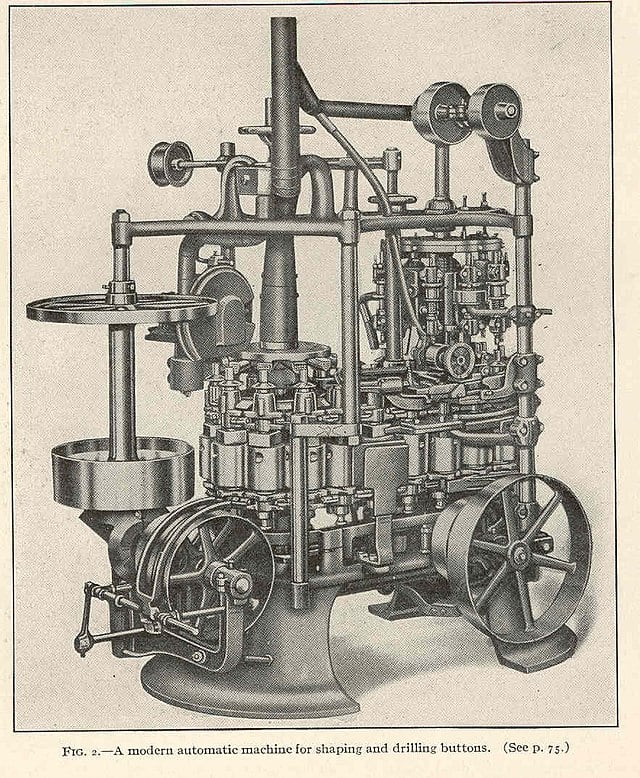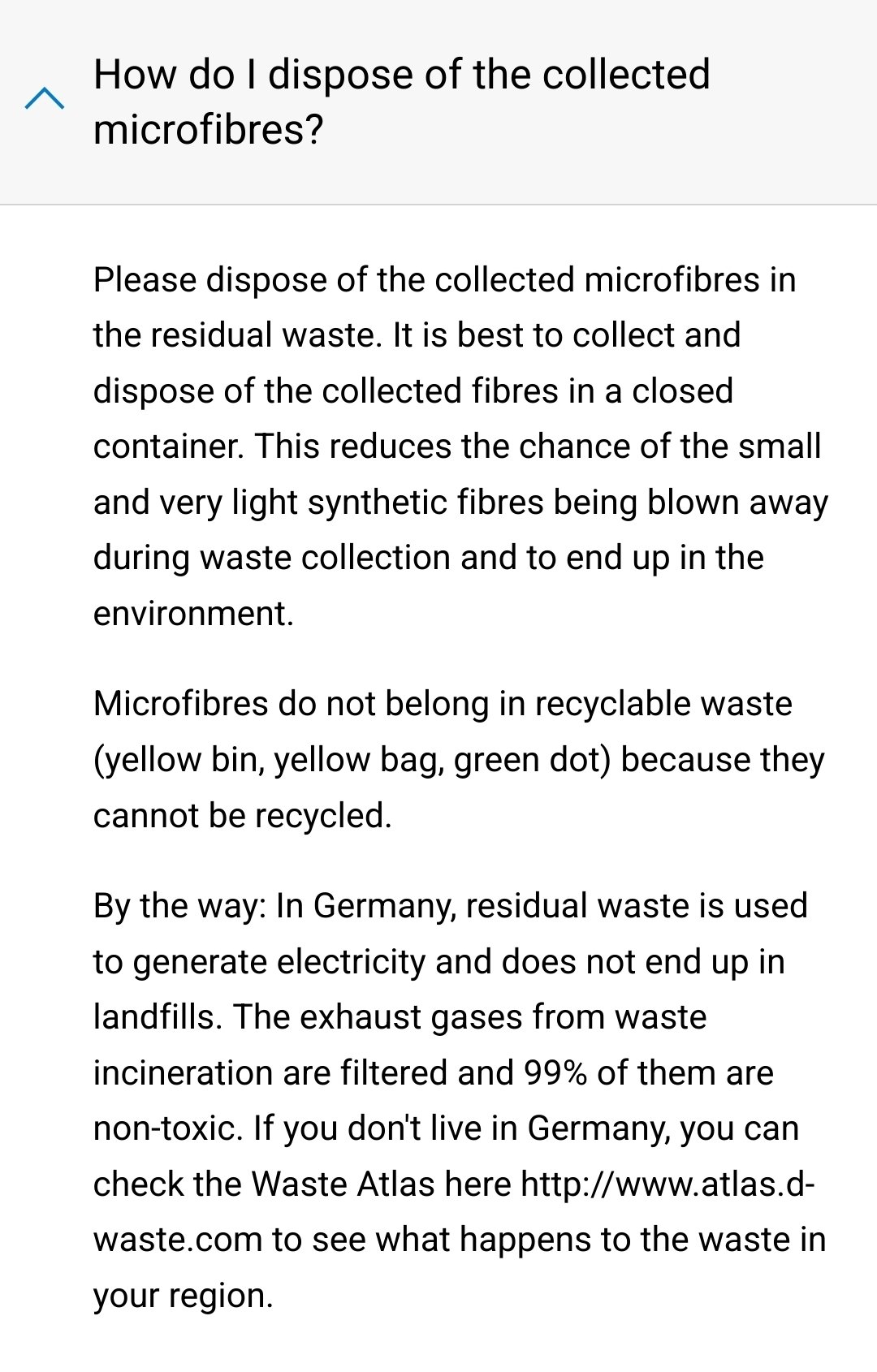Summary
A new study from Spain’s Autonomous University of Barcelona reveals that tea bags made from nylon, polypropylene, and cellulose release billions of micro- and nanoplastic particles when steeped in boiling water.
These particles, which can enter human intestinal cells, may pose health risks, potentially affecting the digestive, respiratory, endocrine, and immune systems.
Researchers urge regulatory action to mitigate plastic contamination in food packaging.
Consumers are advised to use loose-leaf tea with stainless steel infusers or biodegradable tea bags to minimize exposure.
What isn’t releasing billions of microplastic particles? We’re fucked.
When someone is getting laid and he drops a load in her, he’s probably injecting microplastics.
Just a thought for next time you are in bed with someone.
And if you don’t- the condom? Also releasing microplastics. That glass of water you have afterwards because you’re all hot and sweaty and thirsty? Also full of microplastics.
As long as you’re using latex/nitrile condoms you should be good as latex and nitrile aren’t plastics. Some of the alternatives for people with latex allergies can have plastic in them though.
Good to know, thanks for sharing that article!
Smell that sheepskin condom?
You just inhaled plastics.
Bro, I prescreen each injection for microplastics before sowing the oats. It’s just common courtesy. Don’t ask me about my reload process, if you have to ask you can’t afford it.
Is this the one where you take a turkey baster and insert it?
Totally slightly different method.
remember, microplastics are formed in the balls
I wonder if I am. Do I have enough in me that I’m emitting them?
Yes.
This warning only applies to the pyramid tea bags and not the paper sachet.

It did list cellulose bags as one source, however I don’t quite understand how. Additive to strengthen the material?
Plastic coating to make the bag more resistant to heat.
Cellulose isn’t plastic though, it’s the sugar that makes up plant cell walls, like wood. Cotton fibers are 90% cellulose https://en.wikipedia.org/wiki/Cellulose
I’m confused why they included cellulose without clarifying that it’s not a petrochemical, unless cellulose micro and nano particles are also an issue now. Maybe I should read the original study…
What I meant to say is that the cellulose is coated with plastic. I learned this from another post in the same thread.
They close the bags with a dot of plastic based glue so it doesn’t open
Oh my god. I think I’ll just go back to my teapot.
The square with crimped edges bags have plastic in the paper so that the edges will fuse closed.
Phew! Thought I was giga fucked there for a minute
How many micro plastics are released when I cry?
No it doesn’t. This study is unscientific garbage and should be retracted.
Their “simulation” of making tea involved 300 teabags boiled in 600ml of water at 95 C while being stirred at 750rpm for an unspecified amount of time. They then took counts using undiluted samples of that liquid.
It isn’t clear why they chose such an absurd methodology, but it is absolutely spurious to draw conclusions from this about teabags used under normal conditions.
Either way, loose leaf is just better.
So can I still have my tea or what? I’m inclined to trusting you over some barcelonians
Yeah, just don’t put your teabag in a blender.
Gotchya
“got ya” or “gotcha” - make up your mind :D Although “got it” would be better here. From my non-native speaker understanding, “got ya” is more like “I got what you are saying”, whereas “gotcha” is more commonly used as “I got you there” - as in “I played a prank/practical joke on you and you fell for it”.
But this might just be something that varies with regional preference, or even from speaker group to speaker group.
You might be overthinkya 😅
You might not be enough grammar OCDya :p
Just go with loose leaf, if you like tea you’ll be doing yourself a favor anyways because it’s much better tea.
You’re so right. Azores (a part of Portugal) produces some great tea. Love the green variety
Just be sure to brew it at the right temperature. I ruined green tea for years until someone pointed out I was doing it wrong by using boiling water. I never realized you’re supposed to brew it at or under 160F
The green variety you shouldn’t brew as hot Just a broil (is that the word?) And also leave it longer in the “stew”
It is not the word. Broiling is a cooking technique of using very high direct radiant heat (i.e. cooking below the heat source). In England and Europe it’s often called “grilling”.
Sorry, late reply. Not a native speaker, and although I know a bit of english, I struggle with some culinary terms. I thought broil was when you heat water just below boiling point, like 80°C instead of 100°. What’s the term for that? It’s more like poaching 😅
Username checks out
.
You can’t draw any real world conclusions from this methodology.
Apples are safe to eat even though the seeds contain arsenic. Take a bunch of seeds and put them in a blender and test it. That test will show them being toxic.
I would like to see a methodology that is closer to real world use. No way to know if it’s a real problem.
Eat the seeds. Your tolerance is going to spite your enemies.
I mean nothing about the methodology is even close to representing normal tea brewing behavior.
For starters, a typical cup of tea is around 300-350ml, not 2ml and certainly not 1, so the low end is already down to 23,371 particles even before accounting for the brewing technique.
Secondly, nobody holds their tea at an active boil while stirring it at 750 rpm. That’s virtually blending it. There isn’t a meaningful way to compare that to typical tea brewing behavior but I wouldn’t be surprised to learn that it produced 10,000x more particles.
“I WANT A GOD DAMN LITER OF
COLATEA!”-British Super Troopers movie maybe?
.
I think you might have skimmed over the methods, but think what the OP was trying to say is:
Concentration: 300 tea bags / 600mL = 1 teabag per 2mL (175 tea bags in one 350mL cup of tea, doesnt appear typical?)
Mixing: 750rpm × [1m/60s] = 12.5 rotations a sec (Awfully fast to be stirring tea, constantly)
Incubation time: Not specified. (They could have left boiling overnight?)
There seems to be many points about the methodology that raise eyebrows. Maybe it’s ok if you want to use this method to purify particles for structural analysis or test toxicity on cells, but it doesn’t seem fair to present this as “release of micro/nanoplastics (MNPLs) from polymer-based teabags into the aqueous phase during typical usage”, as the amounts seem exaggerated.
.
Do we have a standard for how long people keep their teabags in hot water?
'bout four minutes should be enough. Otherwise it just turns bitter. A few hours? 🤢
Yeah, if you increase concentration until it’s visible you will get high concentration solution. By the same principle water is a deadly poison because scientists forse fed a bunch of rats liters of water until they died.
They report their findings as particles/ml, not particles/teabag. It should be obvious to you, as a scientist, that the particles/ml evolved given 1 teabag in 350ml of water will be massively different from the particles evolved with 1 teabag per 2ml of water.
.
I’m not totally sure what you mean by “get out more or less of the dissolved particles”, but I think I understand where your confusion lies. You keep referring to quantities, i.e. mass or particle counts. Their data is reporting these things as concentrations.
It should be obvious to you that 7.14g of salt dissolved in 2ml of water will produce a highly concentrated solution (saturated, in fact), whereas the same 7.14g dissolved in 350ml of water will produce a dilute solution. The concentration of the first one is 3.57g/ml, but the concentration of the second is 0.0204g/ml.
If somebody then turns around and says that 7.14g of salt dissolved in a mug of water will produce a concentration of 3.57g/ml, it should be readily apparent that they are incorrect. That is in effect what the authors are saying by reporting their results as particles/ml and then saying that those numbers are representative of what you might expect when brewing tea under normal conditions.
Does that all make sense?
.
Has anyone checked how much particles I produce when I wash my fleece jacket.
Get yourself a Guppy friend 🙂
Certainly not an expert in the field here, but I’m not sure there’s much environmental benefit from laundry bags of that sort, given the collected microplastics optimistically end up - Germany excluded - collated in your local landfill.
Guppyfriend even recommends sealing them in a container for disposal to ensure they don’t blow around during waste collection and transport. This assumes of course that you can successfully transfer microplastic fibres from a large bag into a small container without spillage, but that’s a matter separate from my conjecture.
While I don’t think any particular company that makes similar bags is purposefully guilty of this, the marketing strategy used to promote these as environmentally responsible products just smells like greenwashing to me.
The ones I’ve had are also made of synthetic materials, and so eventually break down and begin releasing their own fibres.
Frankly, the true environmental benefit I see is something I’ve never seen advertised: I can wash groups clothes I want kept from intermingling in the same load and therefore run the machine half as often.
I’m in Denmark, where we burn our non-recyclabes, so I knowit won’t end up in a landfill. Let’s burn them planet instead, lol.
How did I read the whole page and still have no idea what the fuck it is? It’s a laundry bag (?) that stops microplastics… And for all I know when I have sex with it, I supercharge it’s nano particles to hunt plastics in the atmosphere with tiny lasers or something?
The whole site is a vacuous infomercial as far as I can tell.
And after your wash, take it out, like lint in a dryer. Been using it for 3 years myself, and came to market in 2015. It works.
Also, they DON’T state that it won’t supercharge it’s nanoparticles to hunt plastics in the atmosphere with tiny lasers if you have sex with it, so why not try?
I’m in!
So here’s one (potentially major) issue with these bags:
While the bag catches a lot of microplastics, it is also leaving a lot more in your clothes because they were washed and contained in that bag. Where do those loosened microplastics on your clothes go? Either into the dryer (or outdoor line-dry) and expelled into the air, or you indoor line-dry your clothes and release more microplastics as you wear your clothes, breathing them in as you go about your day.
So people would essentially be paying $35 a bag to slightly improve wastewater at the expense of increased air pollution. If you indoor line-dry those clothes, you put your own health (and potentially the health of those around you) at greater risk.
The only non-polluting solution at this point is to not buy, wear, or launder any plastics-based fabrics. This includes polyester (a lot of people apparently are unaware of this).
Very interesting! The Guppy Friend is only for use in the washer, then the micro plastics are collected in the end of the bag, which you take out like lint in a dryer, but I still think your point is very valid! I dry all my clothes on a rack, and I’ve only got two fleece shirts (never getting one again, these are many years old), so it’ll be thrown out when I no longer need it, but interesting point with the air particles!
Still, how much micro plastics are we not getting from plastic cups, bottles, door wrapping etc? Too much lol
I’ve read that using fleece/plastic clothing you already have is better for the environment than throwing them out, as the plastic is already there.
Still, how much micro plastics are we not getting from plastic cups, bottles, door wrapping etc? Too much lol
Yeah, that’s the thing! It’s near impossible to quantify not only the number and size of plastic particles being released, but also from what sources and how impactful it is on our health over time. There are so many variables involved.
I like the idea of the guppy bags, but honestly we need strict government regulation around the world to make a real difference in stopping plastic and PFAS pollution/contamination.
100% agreed on the restrictions. I don’t think we can remove plastics by it’s entirety, but we can definitively limit its use dramatically!
No it’s not, because I use a stainless steel capsule and loose leaf tea, which is superior in every way (even if microplastics weren’t an issue).
If you don’t make your tea like this, do yourself a favor and upgrade to some quality loose leaf!
Edit: lol, I love that this is getting downvotes. Are there disposable teabag enthusiasts out there?
Your tea bag…
No, it’s not, because I use something other than tea bags.
That’s you. That’s what you wrote.
Lol
Thank you for looking at what I wrote and seeing humour rather than malice.
OMG. That’s a good way to start the new year. Now my daily tea is going to be filled with guilt and worry.
Just buy paper tea bags or loose leaf tea. The article is talking about those stupid nylon “pyramid” tea bags.
A lot of the paper bags are coated in plastic. So loose is your best option.
Get a tea infuser. Loose tea tends to be 100x better quality anyway.
Cool, now do coffee pods.
We’ll shit, I’ve been drinking a lot of tea…spose it’s time to get out the Titanic tea steeper i got from White Elephant.
C O O L
O
O
L
Looks like the risk comes from boiling tea bags made of these materials. Cold steep chads keep winning
You’re a monster. I just wanted you to know that.
These “materials” included cellulose, which is just plant fiber.
Are we really going to start calling plant fibers “bioplastics” now in an effort to scare people?
Stand down brother, you’re up against a cold steep chad
Cold steeping tea is exactly why we can’t have nice things.
Polymerized cellulose is by definition a biobased polymer, this isn’t anything new. The study doesn’t make any claims that polymerized cellulose is harmful. Calling them “plant fibers” is incorrect as they aren’t derived directly from a plant, like say, cotton. These are manufactured using cellulose.
deleted by creator
deleted by creator
One thing to note with all these articles; so far, there are no major comprehensive studies that definitively show microplastics are a danger to the body, or show what levels are considered acceptable or not.
Considering the entire world population hasn’t just collectively died in the last 50 years, I’m leaning towards the effects of microplastics being negligible, or at least a hell of a lot less dangerous than other established risks like processed meat or direct sunlight.
Meanwhile cancer rates are sky rocketing and we don’t know why.
Perhaps leaning on the conservative side is smarter than going balls out on plastic because we are too ignorant to know the actual effects.
If we find that all the plastic pollution is what’s causing so much cancer then there’s nothing we can do about it because it’s already too late with how prevalent plastic pollution already is.
Pretty much every case of damage due to pollution is caused by ignorance and I don’t see this situation being any different.
Stroke rate increasing as well.
there are no major comprehensive studies that definitively show microplastics are a danger to the body
I’m not sure what your criteria for “major comprehensive study” is, but there are countless studies linking microplastics to all sorts of things. Most arterial plaques are full of microplastics. The massive drop of male fertility rates (50% globally) has been linked to microplastics. Microplastics have been demonstrated to interfere at the cellular level by mimicking hormones.
The specifics of everything that they’re doing to us is still unknown. But we know many bad things microplastics definitely are doing.
We’re WELL past “are microplastics bad?”. We’re at the point of figuring out how badly screwed we are.














